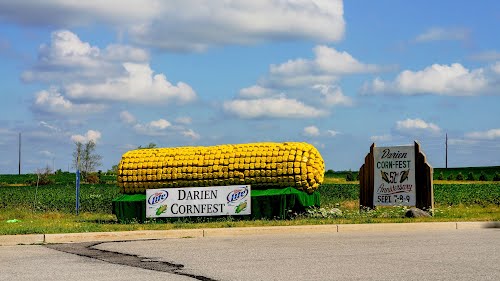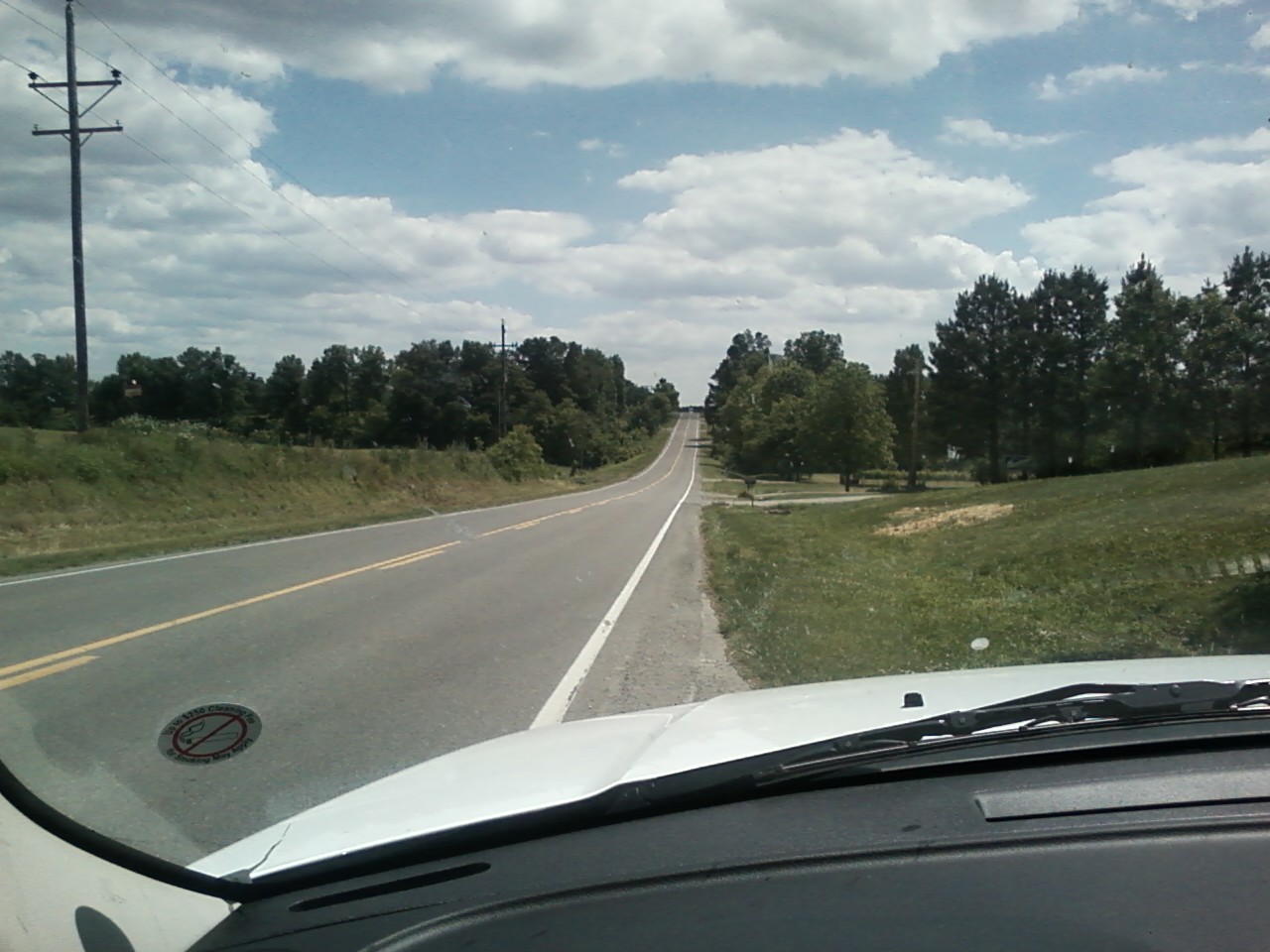I drove last Monday from Spring Green, a village in southwest Wisconsin, to Chicago’s O’Hare Airport, from which I flew back to the East Coast and Mrs. T. This wasn’t a great idea–it was Labor Day and highway traffic was brutally slow–but I didn’t have any serious alternative. Fortunately, my trusty GPS decided early on that it would be foolish for me to try to get to O’Hare via I-90, and moments later I found myself in the middle of Janesville, Wisconsin (pop. 63,575). I briefly thought that my GPS had gone mad, especially when I came within two left turns of being stopped dead in my tracks by the local Labor Day parade. I managed to extract myself without incident, however, and a few minutes later I was cruising unharassed down a peaceful country lane.
 Rural Wisconsin, it turns out, looks a lot like the part of southeast Missouri where I grew up. As I made my way through the middle of nowhere, I saw any number of things that I might just have easily seen in and around Smalltown, U.S.A. I laughed out loud when I drove past a giant ear of corn that proclaimed the coming of an annual event known as Darien Cornfest, not because I found it funny but because it felt so familiar. Then I said to myself, I wish I could call Mom and tell her where I am and what I’m doing.
Rural Wisconsin, it turns out, looks a lot like the part of southeast Missouri where I grew up. As I made my way through the middle of nowhere, I saw any number of things that I might just have easily seen in and around Smalltown, U.S.A. I laughed out loud when I drove past a giant ear of corn that proclaimed the coming of an annual event known as Darien Cornfest, not because I found it funny but because it felt so familiar. Then I said to myself, I wish I could call Mom and tell her where I am and what I’m doing.
After my father died in 1998, I took to calling up my mother regularly. Within a year or so I’d fallen into the habit of speaking to her on the phone two or three times a week. It never occurred to me that there was anything unusual about this practice until I told other people about it and found that most grown children don’t call their parents nearly so often. To me it was nothing more than a stopgap: I wasn’t able to visit my mother more than once or twice a year, and my calls made her feel as though I were still a part of her daily life.
All told, I suppose I must have called her a couple of thousand times between 1998 and her death fourteen years later. I confess that I can’t recall more than a half-dozen of those calls with any specificity, since we never talked about anything in particular: I told her what I’d done that day, trying in the process to make her laugh, and she in turn told me about her own day. I liked to call her from the cab when I was en route to Broadway, knowing that it would please her to hear that I would soon be seeing an actor of whom she’d heard. (I do remember how thrilled she was when I told her that I was about to see Hal Holbrook in Mark Twain Tonight!) When the news was good I shared it with her, and when it was bad I kept it from her. My job was to make her happy, and since I couldn’t do it in person anymore, I did it on the phone. It was as simple as that.
 In the last years of her life my mother liked nothing more than to be taken for long country drives on sunny afternoons, and I did so whenever I visited Smalltown, however briefly. That’s what made me think of her as I made my circuitous way from Spring Green to O’Hare on the back roads of Wisconsin and Illinois: I could easily imagine her smiling at the notion of her city-dwelling son getting caught up in a small-town Labor Day parade.
In the last years of her life my mother liked nothing more than to be taken for long country drives on sunny afternoons, and I did so whenever I visited Smalltown, however briefly. That’s what made me think of her as I made my circuitous way from Spring Green to O’Hare on the back roads of Wisconsin and Illinois: I could easily imagine her smiling at the notion of her city-dwelling son getting caught up in a small-town Labor Day parade.
Calling my mother eventually became a sad and painful chore. For a year or so her memory was failing, and even after anti-dementia drugs reversed her mental decline, I dialed her number with undiminished anxiety, wondering what fresh horror awaited me. In time she grew so weak and fragile that she could do nothing more than whisper hello, forcing me to grapple anew each evening with the agonizing task of chattering brightly and pointlessly for a few endless minutes. Yet I always thought as I hung up the phone, A time will come when you’d give anything to be able to do this again.
Sure enough, it has. I wouldn’t want to repeat any part of the last year of my mother’s life–but there isn’t much that I wouldn’t give to be able to call her up and tell her that I just saw a giant ear of corn.
